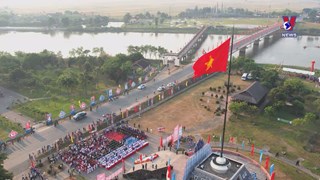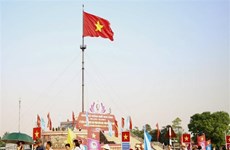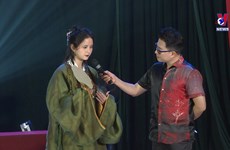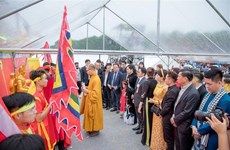Tet customs: Tea culture brings family members closer together
 Most Vietnamese people are familiar with tea drinking. (Source: Vietnam Pictorial)
Most Vietnamese people are familiar with tea drinking. (Source: Vietnam Pictorial)There are many aspects of tea culture worth noting. The therapeutic and medicinal functions of tea are well known and in hot weather, hot tea is devoured for its surprising cooling effect, and in cold weather for its warmth.
There are many types of tea in Vietnam, each with its own unique flavour and properties. Tea cultivation, the history of tea in Vietnam, its relationship to the environment, its economic impact on the ethnic minorities who grow it, the aesthetic aspects and social importance of tea-drinking rituals, could all provide topics for extensive research.
Beside unscented green tea, teas with the scent of flowers are unique examples of Vietnamese tea culture. The whole process is made by hand, in a very careful manner to transmit the natural scent into the tea.
Lotus tea is popular during Tet, the Vietnamese Lunar New Year, a unique tea made in a traditional way. To have the finest lotus tea, lotus flowers must be picked when they have just bloomed and kept fresh. Lotus flower buds are very carefully peeled back, the petals preserved without a single rip or tear until the fresh green tea is added.
After all the buds are full and rewoven they are put aside overnight and the next evening, the process is reversed and the wonderfully aromatic lotus tea is extracted. To make a kilo of lotus tea nearly one thousand lotus flowers are needed.
Jasmine tea also has a special form of preparation. The jasmine flowers are harvested during the day and stored in a cool place until night. During the night, the flowers bloom with full fragrance. The flowers are layered over the tea leaves during the scenting process. They are turned and turned and left to absorb the scent. In order to produce 1kg of jasmine tea, 1kg of jasmine flowers are needed.
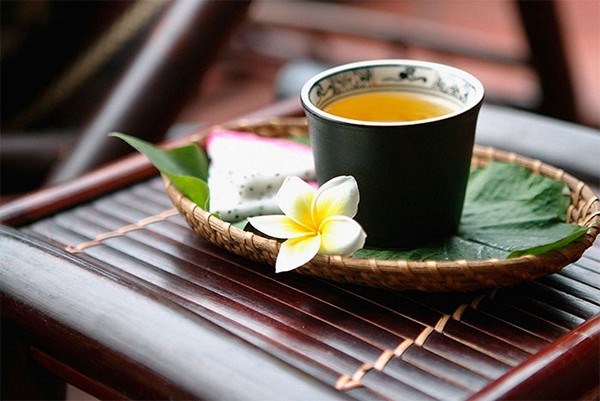 Tea culture is not only about drinking but also has various meanings.
Tea culture is not only about drinking but also has various meanings.Vietnamese tea drinking is simpler than the Chinese or Japanese, but it bears the essence of Vietnamese culture. The yellow and green of the tea and the natural scent of flowers symbolise the country, rich in culture and natural resources. Bitterness at the beginning reflects the hard-working life of the people. The sweet and cool taste that lingers evokes the Vietnamese soul, sentimental and faithful.
A tea course requires a brazier, a boiling pot, an earthenware pot of cold water (usually rain water, and in special occasions some dew gathered from lotus leaves), a tea pot, teacups, tea box and a few pieces of aloe and aromatic wood.
The host will boil the water for a few minutes, then take it off the fire and let the temperature drop to about 90oC. It is poured gently into the teapot, and then cover tightly for about five minutes. While the tea is stewing, tea connoisseurs will comment on the fine aroma of the tea, always keeping the tea as the focus of the conversation, as you would do at a wine tasting. From the teapot, the tea is poured into a large cup called a soldier-cup.
This procedure ensures an even distribution of the tea's flavour and colour. If it were poured directly into each cup, the first cup would be more diluted than the last. As you sip the tea, discuss its taste and the mood it brings to you. Poetry is always a good subject at the tea course, but nothing of the past, nothing of the future. The subject belongs only to the present.
All the pots and cups are cleaned in boiling water, which gets rid of the dirt and warms them up. Dried tea leaves are put inside the pot, which is then filled with boiled water and covered.
More boiled water is poured over the pot, so that it is heated both inside and outside and the leaves are thoroughly stewed.
Tea can be divided into three kinds with different advantages including dried tea leaves, tea combined with herbal remedies and tea scented with flowers./.
